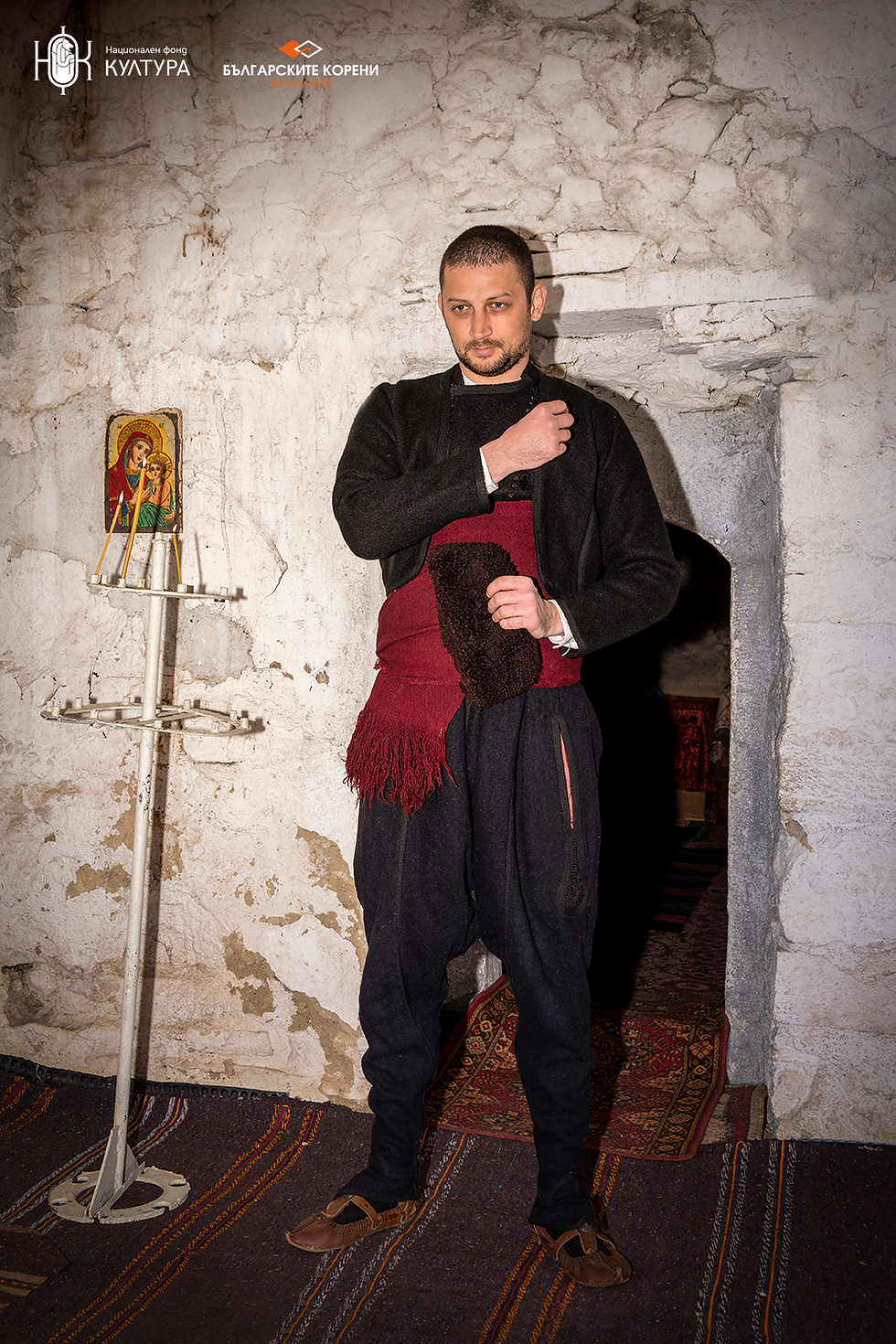Men's costume from dark baize from the second half of the 19th century
- Грозделина Георгиева-Саватинова
- Jul 15, 2021
- 3 min read
Updated: Nov 4, 2021
As early as the Middle Ages, the Byzantine chronicler Nicephorus Grirora noted, "that the clothing of the Bulgarians consisted of rough household cloths, called “abi”, which replaced the sheepskins from before" (From "Roman History").

Men's clothing is festive and everyday, the difference being in the rich braided decoration and metal or beaded jewelry on the costume. The intensification of trade contacts and the popularization of the tailor, painterly and braiding crafts lead to changes in the color of men's clothing, which darken from west to east. Both types of clothing are more climatic and geographical, rather than temporal, because the “belodreshno” clothing continues to exist, and where it was used, it is preserved as summer. The harsh mountain climate in the Razlog region also contributes to the choice of men's clothing made of thick home fabric.

The boy is dressed in dark brown full-bottomed breeches (cheshiri) , wide and topped with a rope for fastening at the waist. Below the knee, the full-bottomed breeches are narrowed on the leg and fastened with wire fastening buttons. In this part of the legs they put socks, mainly in black color or “nogavitsi” (kalci) made of beaten wool or a shawl in white color, richly striped with braid or fastened with triple twisted and tightened black yarn. When placed on the wide full-bottomed breeches , they attract the eye of the male species, but they are also necessary because they protect the lower legs from injury. The seams and pockets can have a richer braided decoration or a simple one in the everyday suit. On top they wear a white shirt made of home-woven fabric, with a small collar and sleeves with cuff fastening. A sleeveless vest is placed on the shirt, which protects the body from the sharp temperature amplitudes in summer and winter.
The waist is girded with a red, black or purple belt several meters long, and one end with the fringes descends beautifully on the full-bottomed breeches. The light color is given by the young, and the dark one is for married and older men. In the belt the man hides the most necessary items: a money box, a bag of tobacco, a pipe, a towel, etc.

In the past, a red men's belt was put on the bride's veil and, holding the groom's hand, she went wherever he led her. Belts are ritually girded to boys as a sign of socialization and their transformation into young men fit for marriage.

In cold weather or on holidays, they wear an “aba” or “dolama” on a vest - from the same shayak, short to the waist with a sleeve.
In the winter, shepherds and men working outside wore a “opandzhak” (kebe, yamurluk) made of fur or beaten wool. A wide, warm and comfortable garment that is waterproof and protects from cold and rain.
Finally, the suit ends with leather moccasins worn on the legs, which are preferred because of the ease and comfort of walking and working. In the twentieth century, the wealthier also wore konduri when dressed festively.
They put a hat on their head with lamb or sheepskin turned outwards.

One of the few men's jewelry is the “kustek” - a metal jewelry with a hook at one end and long chains that go down and tucked into the belt at the other end. Made of silver, with added ornaments of niello, enameling, gilding or techniques of granulation and filigree to emphasize the social and property status of the man. Over time and the replacement of traditional urban clothing, the kjustek was replaced by a chain with a watch inserted in the small pocket of the vest or “setreto”. On a holiday, unmarried men could put on a bead not a metal one to claim that they were good-natured young men.

Petar Bonkov from Razlog put on the costume.
The costume is owned by a family from Razlog.
The project "Study of the specifics and richness of national costumes from the Razlog region in the light of cultural diversity" is realized with the financial support of the National Culture Fund under the program "Cultural Heritage".
In fulfillment of the goals of the project we present some of the most beautiful traditional costumes, typical for the Razlog valley in the last 2 centuries.
We offer our sincere thanks to our hosts from the Historical Museum - Razlog, and to all local people who helped with the realization.
Special thanks to all participants and team members who took their time and with useful information, knowledge and valuable advice made possible the work on the project.
A reverence to the girls and boys from the town of Razlog, who stood in front of our camera and with their enthusiasm, youth and beauty revived for a new life the most beautiful costumes from old Mehomiya.

Comments